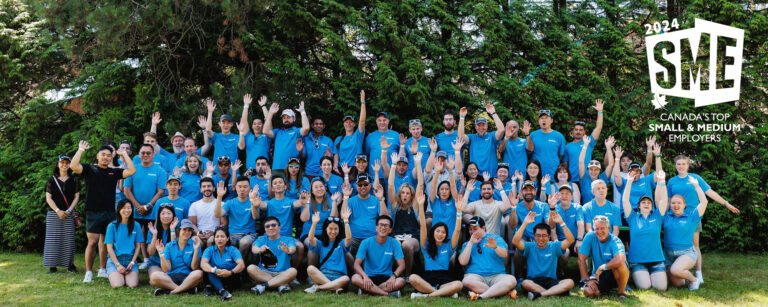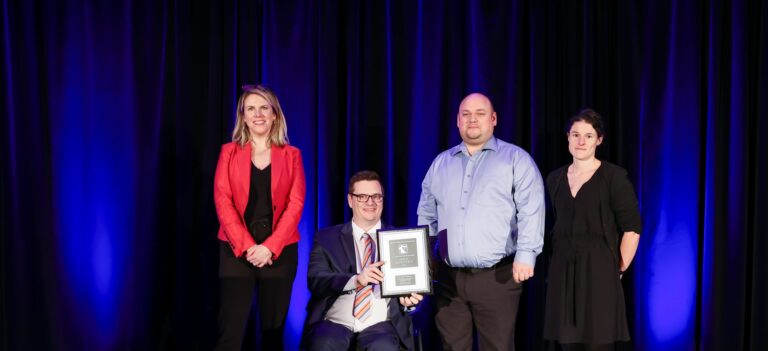Background
Binnie is a proud supporter of the 2022 Association of Consulting Engineering Companies BC (ACEC-BC) Awards for Engineering Excellence Gala – an annual celebration of the internationally recognized innovation and technical excellence of BC’s consulting engineering industry.
About the Gala
The event is the 32nd Awards for Engineering Excellence Gala – an annual celebration of the internationally recognized innovation and technical excellence of ACEC-BC member firms.
Our Nominations
Binnie is nominated in two categories as follows:
Municipal & Civil Infrastructure for the Lougheed Highway Upgrades (information below)
The City of Burnaby required engineering and landscape architecture services for the design and construction of road works and improvements on Lougheed Highway. This project involved a combination of pavement rehabilitation, road narrowing, median installation, sidewalks, cycle tracks and street beautification. Burnaby’s work improved the flow of traffic, bicycle and pedestrian accessibility, and—most importantly—safety.
Binnie staff worked closely with the City of Burnaby, utilizing lighting and landscape architecture to create a safe, welcoming place for users. Additionally, staff liaised with Burnaby’s Traffic and Planning departments to suit their needs for safely conveying vehicle, cyclist, and pedestrian traffic through the corridor. Binnie designed safer access at intersections, as well as transitions from sidewalks, bike lanes, and urban trails to the intersection crossing facilities. Work included upgrading roadways to the Lougheed Town Centre Standards; urban trail design, road rehabilitation and pavement marking; and landscape architecture design.
The goal of this project evolved to ensure that as much of the ultimate infrastructure would be created with the intent of preserving it for future development to expand. The curbs, median, roads and street trees were placed in ultimate locations as well as extensive sidewalk and cycle tracks. Where constraints existed, the infrastructure was shared in an asphalt multi-use-pathway. Future developers will now be able to maintain much of their frontage and be required to add rainwater management amenities. as well as separate the multi-use path into sidewalk and cycle track wherever it exists.
It was decided that due to safety challenges and the lack of sunlight and rainfall under the guideway, there would be no median planting. This led to an artistic fence that provided a visual element but also functioned as infrastructure to stop pedestrians from jay-walking across busy Lougheed Highway.
The approach to this project was a very collaborative one. With so many important stakeholders both internally at the City and externally it was not going to be successful without engagement and thoughtful design. Since this project was originally designed three years before construction started, many of the outside agencies had to be re-engaged and various design requirements had changed. We have worked closely with the City, Contractor and outside agencies throughout to coordinate and ensure all requirements and restrictions are adhered to.
The City took a very collaborative approach with both Binnie and the Contractor Cewe. The City’s professionalism the entire way through was a key to the project’s overall success at both design and construction. The City was open to changes that were needed along the way and provided quick approvals and direction which kept the project on track.
Over an 18 month pandemic, the construction of 2 km of Lougheed Highway from Underhill Avenue to Austin Road was upgraded with new asphalt, street lighting, pedestrian and cyclist infrastructure including landscaping. The section from Gaglardi to Austin Avenue of 1 km was upgraded on both sides with brand new all ages and abilities, active transportation infrastructure. The corridor has been successfully transformed from a vehicle highway to a welcoming gateway for all modes of transportation.
Soft Engineering for the Compass Implementation on HandyDART Project (information below)
Binnie was engaged by TransLink to manage the implementation of Compass, TransLink’s contactless fare collection system on HandyDART from project initiation to close-out. The project workstreams included equipment installation, driver training, software modifications, customer engagement and communications, and integration with operations procedures.
Equipment Installation: Compass electronic readers and supporting equipment was installed on the fleet of approximately 340 HandyDART vehicles.
Driver Training for 350 HandyDART drivers: A comprehensive training program with training slides, a training video, and interactive demo equipment was developed to ensure that drivers were familiar with the Compass equipment, became familiar with the Compass payment environment, and could assist with tapping Compass cards for customer unable to tap on their own.
Software Modifications: Since 10-15% of HandyDART trips are fulfilled by taxi that do not have Compass equipment onboard, a back-end solution was developed, tested, implemented to enable Compass cards to be charged for taxi-fulfilled trips.
Customer Engagement and Communications: TransLink engaged HandyDART customers and stakeholders for input on the implementation of HAndyDART in conjunction with the HandyDART Modernization engagement. A Customer Adoption plan was developed and executed to help ensure that this unique customer group were supported in their transition to Compass. Multiple postcard notifications were directly mailed to all HandyDART customers informing them of key dates. Welcome packages were also mailed directly to all HandyDART customers. An instructional video was produced and made available to customers online along with virtual training sessions prior to launch and continuing until two months after launch.
Operational Procedures: Operational procedures within TransLink, Coast Mountain Bus Company, and the contracted service provider for HandyDART were updated to incorporate Compass.
HandyDART customers were the main focus of this project, it was crucial that their unique needs were considered in all aspects of the project. A customer trial was conducted early on in the project, to gather feedback on the welcome package materials, the functionality and placement of the equipment, the process of obtaining and loading their Compass cards. The project team provided updates to and obtained feedback from TransLink’s HandyDART Users’ Advisory Committee throughout the feedback to help guide the project. Significant effort and resources were allocated to all the customer communications, including postcards, welcome packages, training videos, informational workshops, and advertisements. Binnie used a programmatic approach to managing this project due to the multiple workstreams that were distinct but interdependent. Leads for each workstream were identified from TransLink, CMBC or the Binnie team as appropriate. The Binnie project manager worked closely with all the workstream leads to ensure the work was progressing and coordinated, with weekly team meetings and regular communication.
Compass was officially launched on HandyDART on October 1, 2021. The launch was successful with more than 70% of HandyDART trips being paid for by Compass two months after launch. When paying with Compass, customer receive the same discount as FareSavers and now have the flexibility of loading their card online, over the phone, at a Compass vending machine, or at the Compass Customer Service Centre. Compass also allows HandyDART customers to seamlessly transfer to conventional transit options.


